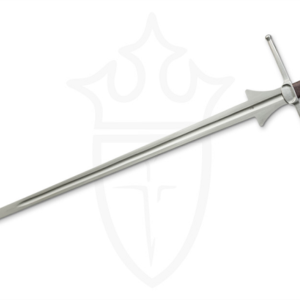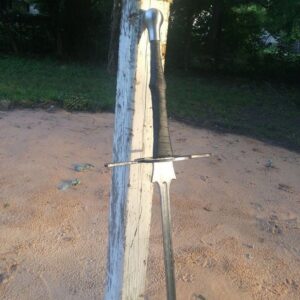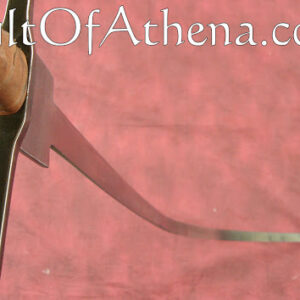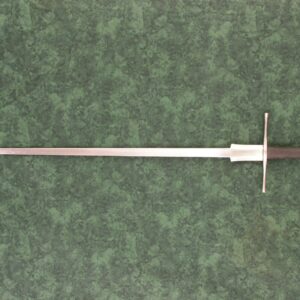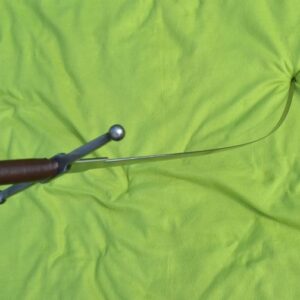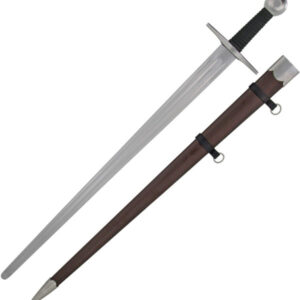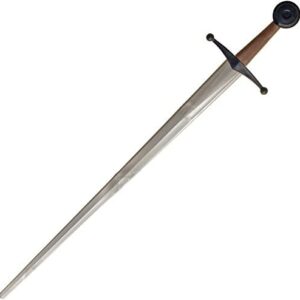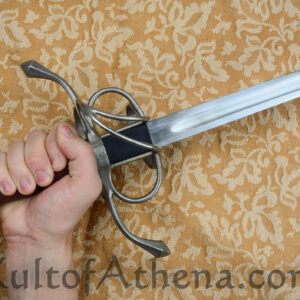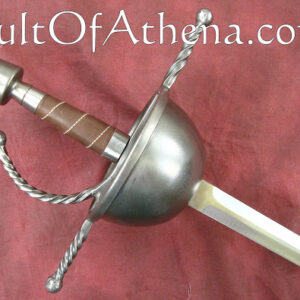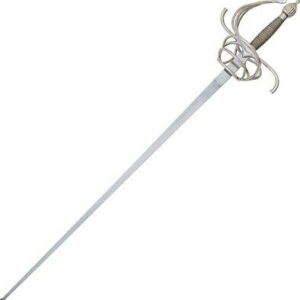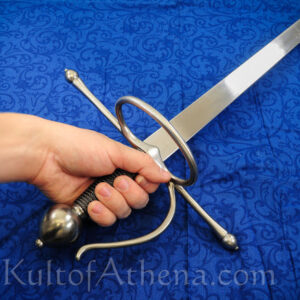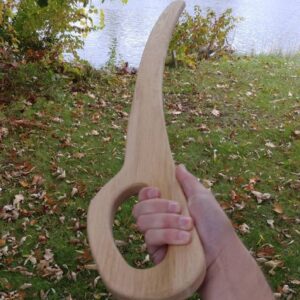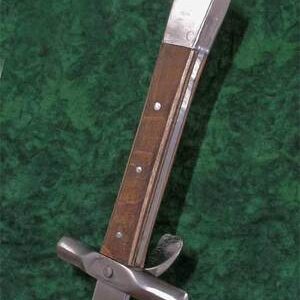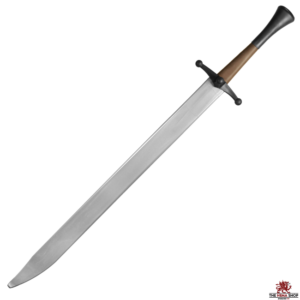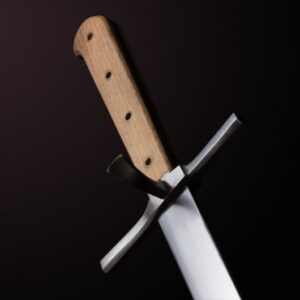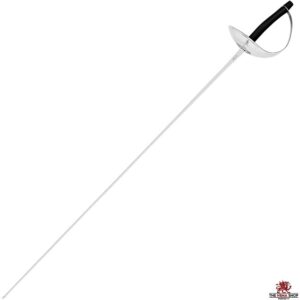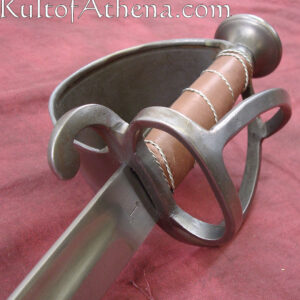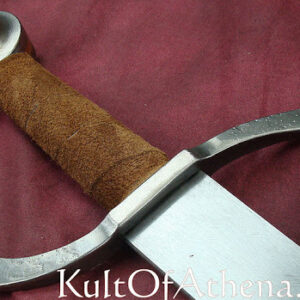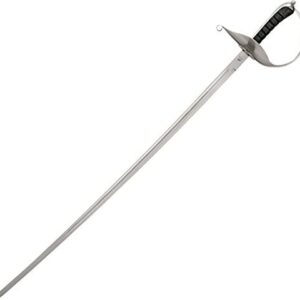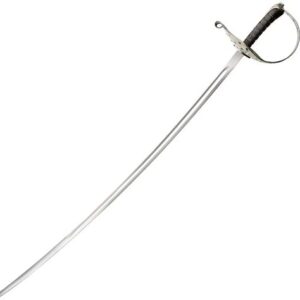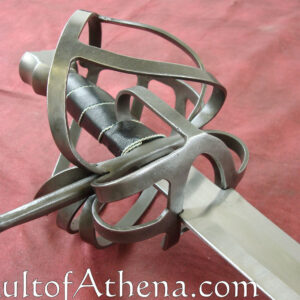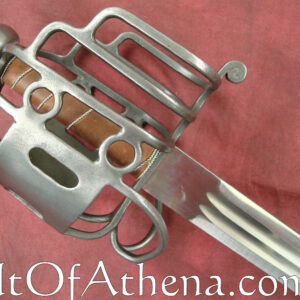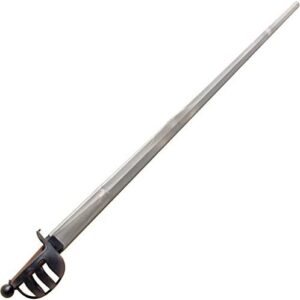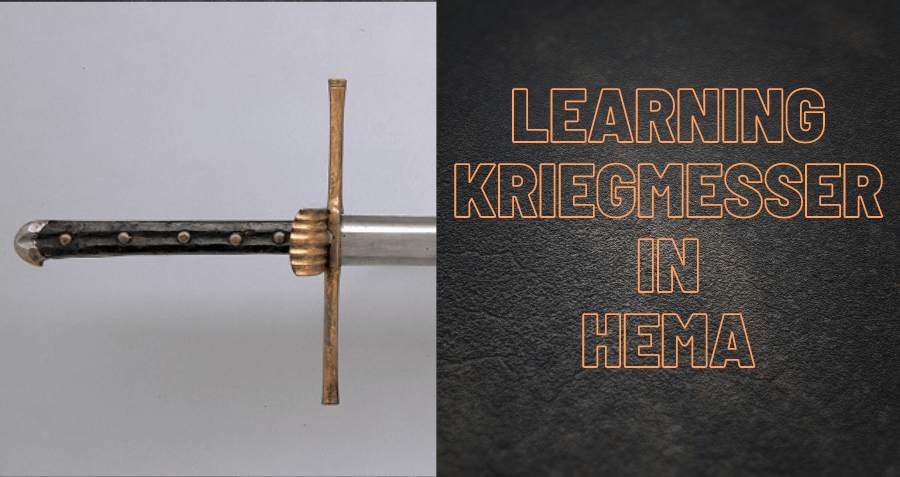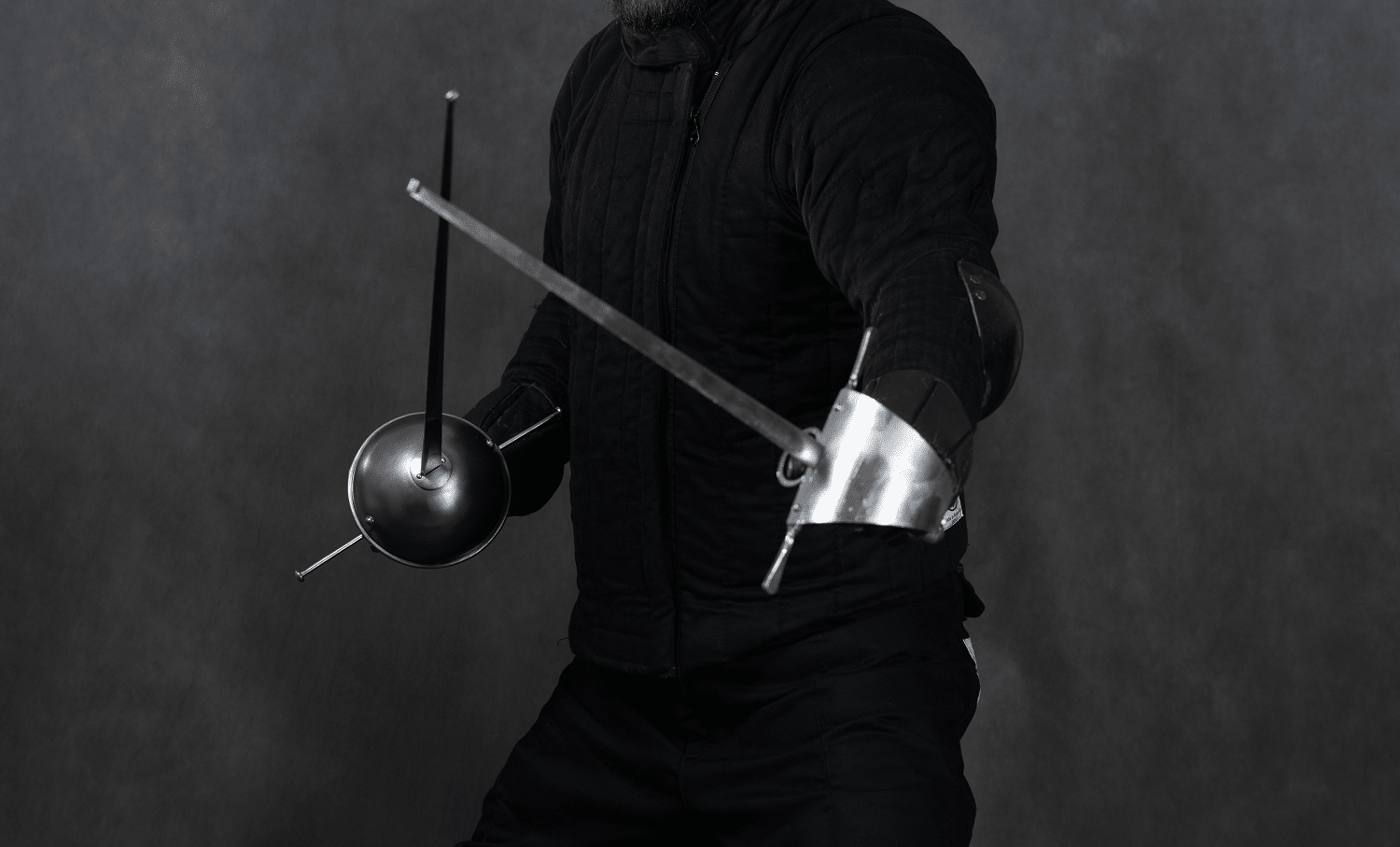The types of fencing swords used in Historical European Martial Arts (HEMA) often varies depending on the particular style of sword fighting practiced by the club and its students. HEMA covers many different eras of swordsmanship, with fencing performed using long swords, rapiers, sabres and many other kinds of swords. This means a specialty fencing sword must reproduce different kind of sword qualities, simulating different types of swords used in HEMA. Just as many different types of swords are studied by historical fencers so too are different types of practice fencing swords used.
Some of the different types of fencing swords used in Historical European martial arts are,
- federschwert (long swords)
- arming swords
- side swords
- rapiers
- synthetic sword wasters
- grosse messers
- dusacks and falchions
- military sabres and cutlasses
- basket-hilted broadswords
- two handed great swords (such as the montante and zweihänder
- wooden sword wasters
Let’s talk more about some of these different kinds of fencing swords commonly used in the Historical European Martial Arts (HEMA) community.
The Federschwert Fencing Sword
One of the most commonly used training fencing sword types used in HEMA is the federschwert (German for ‘feather sword’), also lovingly called a ‘feder’ as a nickname. It is designed to be a fencing sword equivalent to a knightly long sword and is used in styles of swordsmanship that study the long sword. The long sword is also known by other names today, such as the hand and a half sword, bastard sword, estoc and various other terms that all refer to types of what we call today “long swords”.
(We discuss the complex history behind the term ‘long sword’ in our article, What is a Long Sword in HEMA? An Evaluation of the Historical Context)
The federschwert is a specialty made fencing sword with a narrow unsharpened blade that is designed to be able to bend when thrust against a person, greatly reducing the force and making thrusts safe to perform against another fighter (when wearing appropriate protective equipment such as a padded fencing jacket). The federschwert design usually incorporates a special ricasso above the hilt, called a ‘schilt’ (German for ‘shield’) that provides additional protection to the hands of the fencer. The designs used by historical fencers for their fencing sword feders are often inspired by surviving historical examples produced during the 17th century, as well as the illustrations in certain fencing manuscripts produced originally during the same time frame.
Here is an an example of a Federschwert.
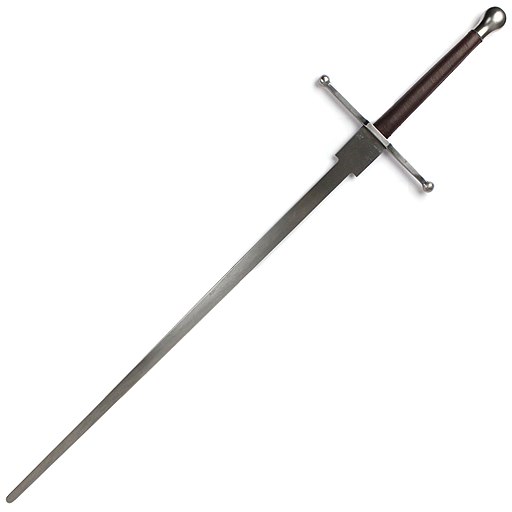 Wellcrafted / CC BY-SA
Wellcrafted / CC BY-SA
And here is an example of how the blade can bend,
There are many different kinds of variations on the schilt design, produced by different manufacturers of historical fencing equipment. While popularly a federschwert has a schilt there are variations which lack them, but still possess blades that will bend in the thrust as a feder does. Sometimes these are referred to as a ‘blunt’ trainer, but it can be confusing to refer to these kind of training steel swords as ‘blunt swords’ are also used in other related sports such as Historical Medieval Battle but these blades are not designed to bend in the thrust. Therefore the special kind of schiltless training sword used by HEMA clubs probably should not be called a ‘blunt sword’ but rather a schitless federschwert. This is just our opinion however, with no common term yet firmly in usage within the HEMA community for the rarer variation of schiltless feder we mention.
You can read our guide, Best Federschwert for Long Sword Practice in HEMA for more suggestions on feders.
The Arming Sword and Side Swords
Sometimes called in popular media such as videogames and movies as a “short sword”, the arming sword is also known by many other terms such as the ‘medieval sword’, an iron sword, double edged sword, a viking sword, a ulfberht sword, or a knight sword. It is a smaller sword than a long sword, designed for wielding one handed but can be gripped two handed by holding the pommel.
The arming sword is often depicted as a Templar crusader sword in films and media, and members of the general public today most identify this type of sword as being the weapon of these knightly crusader orders. However they were commonly used throughout Europe for many generations after the decline of the crusader states and their orders, and were used for generations before them, too.
The arming sword went through a transition into the side sword (Spada da lato in Italian) in the late 16th century and throughout the European Renaissance period, being a very similar weapon with a more complex hilt, and a predecessor of the rapier.
Both arming swords and side swords were often used with a companion weapon, such as a shield, a buckler or smaller sword / knife called a main gauche, or parry dagger (A main gauche is sometimes called a sword breaker in popular media due to a misconception that they were designed to trap and break the blades of rapiers, which is very improbable given the durability of historical rapier blades).
We primarily discuss the sword fighting traditions and styles that use the arming sword, and its successor the side sword, in our Path of the Sword and Buckler page.
The Rapier Fencing Sword
The rapier is a sword specialized for thrusting, most popular during the 16th and 17th century in Europe. Those who study rapier sword combat in historical fencing generally study one of the traditions we cover in our Path of the Rapier page. Rapier fencing in HEMA community has many similarities to rapier fencing as performed in the Society for Creative Anarchism, with most of the specialty made fencing swords used in SCA rapier events also being used by HEMA rapier fencers, too.
The fencing blades used in HEMA for simulating rapier combat do not handle anything like a foil nor epee fencing sword, as members of the general non-fencing public may assume. Olympic style fencing does not actually try to replicate historical rapier fencing, and neither foils nor epees are able to perform the full range of techniques that a historical rapier can. This is mainly because both foils and epees have far too much bend in them while also being much lighter, effectively behaving like a wire more than a sword. There are other reasons too, which we discuss in more length in our article, What is a rapier? Clearing up common misconceptions. These differing qualities makes trying to use a modern sport fencing foil / epee not very good for reconstructing historical systems of rapier combat.
For this reason specially crafted fencing rapier blades have been made that reproduce the weight of a historical period rapier, but do allow for a bend in the thrust. They also have a blunt ‘button’ tip that is designed to reduce chances of penetration injuries, and a blunted edge which allows these weapons to perform techniques where a fencer may ‘glide’ their sword down the length of another opponent’s rapier and cease gliding by turning the angle of the edge as a kind of ‘break’. This is difficult to explain fully with just text but can be demonstrated by any historical rapier fencer should you visit a club.
It should be noted however that even these training rapier fencing blades are not a perfect simulation; rapier blades meant for real combat are very hard and cannot bend easily. Therefore possessing even a little bend, as these training rapiers do, changes some of the characteristics of handling but it would be far too dangerous to practice historical fencing with a real unsharpened rapier blade given the force a rapier can thrust with. Concussions and other serious injuries would be very common in historical rapier fencing clubs if the blades never bended in the thrusts.
Here is a video that talks a little more about some of these characteristics of the rapier.
It is also worth pointing out that students of German rapier fencing often choose to use what is referred to as a proto-rapier, a design demonstrated in the works of Joachim Meyer. This weapon is a transitional type from the side sword but before it fully became the stereotypical thin bladed rapier we know of today.
Messer and Dusack Fencing Swords
It is popular in many of the German fencing traditions to also study the langes messer in addition to the long sword, and the dusack is a training sword specially for learning messer combat within this tradition.
These terms can be a little complicated, as the term dusack has changed its meaning over the centuries. Within the Lichtenauer tradition of German sword fencing, the dusack refers primarily to a specific kind of wooden training sword that was used to learn how to handle a langes messer sword and later, during the 17th century was also known as a kind of sabre or hunting sword. Regardless of the variation in blade type, generally the same techniques one performs in early German fencing with the wooden dusack can be used with the later sabre variation, too.
We cover the different styles of sword fighting with dusacks, messers and other variations of backswords on our Path of the Sabre page.
Montante fencing swords
Also referred to as a great sword, or zweihander sword, the montante is best summarized as an exceptionally long sword. While they are rarely used for free play / sparring even within historical fencing clubs due to the amount of power they easily generate, solo forms are often studied by HEMA clubs that specialize in Italian Renaissance sword fighting traditions.
An example of montante sword fencing
The most popular ideas about great swords in modern media come from videogames, films and comics with notable examples being the Buster sword from the Final Fantasy franchise, and the Dragonslayer from the Berserk Japanese manga (comics) series. These are however great exaggerations of what a historical great sword was and how they actually handle in real life.
We discuss real historical traditions of great sword fencing on our Path of the Great Sword page.
Sabre fencing sword
While Olympic sport fencing also has their own ‘saber’ event, what is meant in historical fencing is actual military sabre fencing with a curved blade that simulates the properties of the original weapon.
Also called a cavalry sabre, and sometimes spelled as ‘saber’ instead of as sabre, the weapon also goes by the names cutlass sword, a pirate sword and is related somewhat to a scimitar sword. These are all kinds of backswords which we discuss in the Path of the Sabre page.
Broadsword fencing Sword
Also called sometimes as a backsword, sometimes as a cut and thrust sword, these broadswords are a kind of straight bladed sword that can use many of the same techniques as a cavalry sabre. They were a popular sidearm during the English Civil War period of the 17th century.
Smallsword fencing sword
Smallsword is also studied in historical fencing, and is closely related to Olympic style fencing in terms of the foils used to perform the techniques, although often using hilts more similar to historical smallswords and blades more similar to that used in SCA rapier fencing, albeit much smaller.
You can learn more about smallsword fencing in HEMA by reading our Path of the Smallsword page.
Do Wooden Swords Make Good Fencing Swords?
Despite common assumptions from the general public (and as shown in media such as TV and movies) wooden swords are rare to see used at Historical fencing clubs or even historically by ancient sword fighters. Wooden swords do not properly simulate the blade handling characteristics needed to perform many historical fencing techniques used with most types of swords, although there are exceptions we will mention.
Wooden swords are sometimes referred to as a waster by members of the SCA and HEMA community although this is an anachronism; wasters were historically a term that described cudgels, not wooden swords. There is certainly cases of wooden swords used for training by Romans and the dusack during the early parts of the European Renaissance was predominantly learned with a wooden sword, but a wooden blade cannot reproduce the unique characteristics of a double edged longsword or a rapier, so generally are not used for these disciplines as many techniques for these sword types cannot be performed correctly with a wooden simulator. However single-sticks are known to be used as a training tool for sabers.
This said as a modern invention you can often find historical fencers using fencing sword trainers with synthetic blades for some blades like dusacks and long swords, and these are often used for entry level clubs as starter gear, although more well developed clubs will tend to prefer using steel bladed fencing swords with unsharpened edges, as these best simulate the handling properties of a real sword and allow the full range of techniques to be performed. Unlike a wooden sword a synthetic bladed training weapon is able to bend in the thrust, which is more safe and allows for proper technique to be performed when doing so as well as having better ‘grip’ than a wooden sword does given the different characteristics of the synthetic material. Synthetic blades can be made from thermoplastics or nylon.
*****
If you’d like to learn more information about historical fencing practices please check out our Learn HEMA page for a guide to learning about the historical weapon that interests you. You can also find more guides we’ve written about other topics at our Helpful Guides page. You can also join the conversation at our forums or our Facebook Group community.
